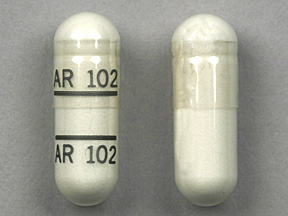
Quinine Sulfate Coupons & Savings Card – Discount Prices from $25.17
Generic for: Qualaquin
My prescription
Edit
324MG, Quinine Sulfate (30 Capsules)
Select pharmacy

CVS
$32.58
COUPON PRICE
Walmart
$25.17
COUPON PRICE
Walgreens
$35.01
COUPON PRICE
Albertsons
$36.16
COUPON PRICEQuinine Sulfate savings card
Show this card to your pharmacist
Walmart
$25.17
BIN
ID
PCN
GRP
019876
LH1FB4F687
CHIPPO
LHX
Powered by
More prescriptions for malaria
More prescriptions for malaria
Quinine Sulfate dosage forms
Dosage Quantity Price from Per unit 324MG 30 Capsules $25.17 $0.84 324MG 1 Capsule $3.26 $3.26 324MG 20 Capsules $17.61 $0.88
| Dosage | Quantity | Price from | Per unit |
|---|---|---|---|
| 324MG | 30 Capsules | $25.17 | $0.84 |
| 324MG | 1 Capsule | $3.26 | $3.26 |
| 324MG | 20 Capsules | $17.61 | $0.88 |
Quinine Sulfate Warnings
Quinine (Qualaquin) is a medication approved by the FDA for the treatment of malaria. However, it is not recommended for managing leg cramps due to its potential to cause serious side effects. Below is a summary of important safety information regarding quinine:
Not for Leg Cramps: Quinine should not be used to treat leg cramps. Its effectiveness for this purpose is unproven, and it can cause severe side effects, such as heart and kidney issues, as well as bleeding problems.
Low Platelet Counts (Thrombocytopenia): This medication can reduce platelet levels, leading to serious bleeding. Be vigilant for unusual bleeding or bruising and report these to your healthcare provider. Platelet levels typically normalize once treatment is stopped.
Hemolytic Anemia: Quinine may lead to hemolytic anemia, causing a reduction in red blood cells. Symptoms to watch for include fatigue, dizziness, and weakness. Regular blood tests are necessary to monitor your blood cell counts.
Abnormal Heart Rhythms (QT Prolongation): Quinine can cause QT prolongation, a heart rhythm disorder. The risk is higher if you have heart issues, low electrolyte levels, or take certain other medications. Seek emergency care if you experience chest pain or feel faint.
Low Blood Sugar: Quinine can increase insulin levels, potentially causing low blood sugar. It's advisable to have fast-acting sugar sources available while taking this medication. Symptoms of low blood sugar include shakiness and confusion. Consult your provider if these occur.
Severe Skin and Allergic Reactions: Serious allergic reactions, including anaphylaxis, and severe skin conditions like Stevens-Johnson syndrome, may occur. If you experience symptoms such as rashes, blisters, or swelling, discontinue use and seek immediate medical attention.
Contraindications: Before using quinine, it's crucial to discuss your medical history with your healthcare provider, especially if you have:
- A long QT interval
- Glucose-6-phosphate dehydrogenase (G6PD) deficiency
- A history of blood problems from quinine
- Allergies to mefloquine or quinidine
- Myasthenia gravis
- Optic neuritis
In case of an overdose, seek emergency medical assistance immediately. Always consult your healthcare provider for personalized advice and to ensure this medication is safe for you.
Quinine Sulfate Side Effects
Common side effects:
- Headaches
- Flushing
- Sweating
- Nausea
- Ringing in the ears
- Temporary hearing loss
- Dizziness
- Blurred vision
- Changes in color vision
Less common but important to monitor:
- Low blood sugar (hypoglycemia)
Serious side effects:
- Hemolytic anemia
- Severe liver problems
- Kidney issues
- Serious infections
- Abnormal heart rhythms
- Very serious allergic reactions
Quinine Sulfate Interactions
Interactions with high risk of serious adverse effects and should be avoided:
- Astemizole
- Cisapride
- Pimozide
- Quinidine
- Aurothioglucose
- Bepridil
- Dronedarone
- Fluconazole
- Ketoconazole
- Mesoridazine
- Nelfinavir
- Piperaquine
- Posaconazole
- Saquinavir
- Sparfloxacin
- Terfenadine
- Thioridazine
- Ziprasidone
Interactions with moderate risk that may require dose adjustment, closer monitoring, or timing changes:
- Warfarin
- Penicillamine
- Cimetidine
- Erythromycin
- Ketoconazole
- Phenytoin
- Rifampin
- Lopinavir
- Ritonavir
- Sodium Bicarbonate
- Desipramine
- Digoxin
- Atorvastatin
- Lovastatin
- Simvastatin
- Amiodarone
- Mefloquine
- Sotalol
- Alfuzosin
- Aluminum Carbonate
- Amisulpride
- Amitriptyline
- Amoxapine
- Arsenic Trioxide
- Azithromycin
- Buprenorphine
- Carbamazepine
- Chloroquine
- Chlorpromazine
- Ciprofloxacin
- Citalopram
- Clarithromycin
- Clomipramine
- Clozapine
- Codeine
- Crizotinib
- Dabrafenib
- Dasatinib
- Desipramine
- Digoxin
- Disopyramide
- Dolasetron
- Domperidone
- Donepezil
- Droperidol
- Efavirenz
- Encorafenib
- Entrectinib
- Escitalopram
- Fingolimod
- Fluoxetine
- Formoterol
- Foscarnet
- Gatifloxacin
- Gemifloxacin
- Glasdegib
- Halofantrine
- Haloperidol
- Hydroxychloroquine
- Hydroxyzine
- Ibutilide
- Iloperidone
- Imipramine
- Ivabradine
- Lapatinib
- Levofloxacin
- Lofexidine
- Lumefantrine
- Mefloquine
- Methadone
- Metronidazole
- Mifepristone
- Mirtazapine
- Moxifloxacin
- Nafarelin
- Nebivolol
- Nilotinib
- Norfloxacin
- Nortriptyline
- Octreotide
- Ofloxacin
- Ondansetron
- Osilodrostat
- Osimertinib
- Oxaliplatin
- Ozanimod
- Paliperidone
- Pazopanib
- Pimavanserin
- Procainamide
- Prochlorperazine
- Promethazine
- Propafenone
- Quetiapine
- Ranolazine
- Ribociclib
- Selpercatinib
- Sertraline
- Sevoflurane
- Siponimod
- Sodium Phosphate
- Solifenacin
- Sorafenib
- Sotalol
- Succinylcholine
- Tacrolimus
- Tamoxifen
- Telavancin
- Telithromycin
- Tetrabenazine
- Toremifene
- Tramadol
- Trazodone
- Trifluoperazine
- Trimipramine
- Triptorelin
- Troleandomycin
- Vandetanib
- Vardenafil
- Vemurafenib
- Vinflunine
- Voclosporin
- Voriconazole
- Zuclopenthixol
